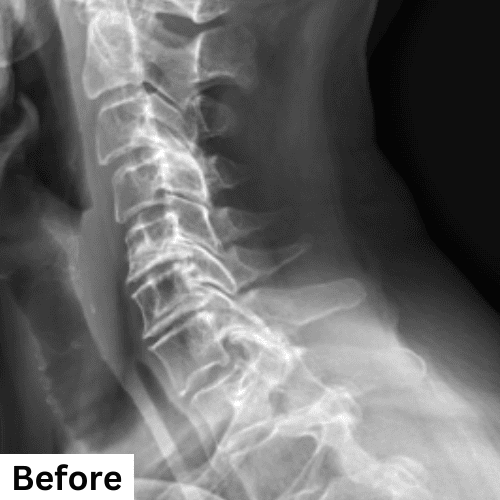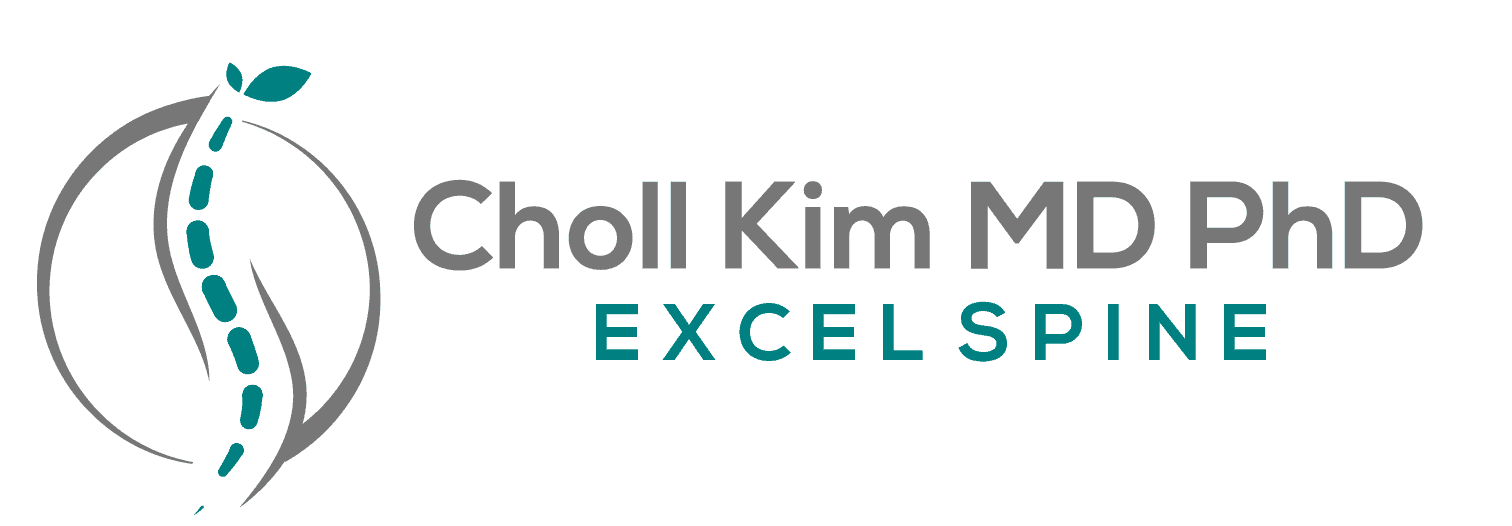What is ACDF?
An anterior cervical discectomy (removal of the disc) and fusion (joining or “welding” of two vertebrae) is a procedure whereby an injured disc is removed through minimally invasive techniques and a spacer is inserted in place of the injured disc to relieve pressure on nerves and stabilize the spine.
Conventional ACDFs are performed using self-retaining retractors that use surrounding neck muscles for stability. These retractors apply significant pressure and crushing forces on the important stabilizing muscles of the cervical spine. Minimally invasive ACDFs use table-mounted retractors that are stabilized by a metal bar mounted to the operating table. This type of retractor applies only gentle spreading forces to the surrounding musculature thereby causing less trauma and inflammation.
Additionally, the MIS ACDF technique uses plates that are integrated into the spacers, making it zero profile as seen to the right.
Why Is an ACDF Procedure Performed?
ACDF is performed to treat spinal conditions that cause neck pain, radiating arm pain, numbness, tingling, or weakness. These symptoms are often the result of:
- Herniated discs
- Degenerative disc disease
- Cervical stenosis (narrowing of the spinal canal)
- Bone spurs (osteophytes)
- Disc bulges causing nerve root or spinal cord compression
The goal of ACDF is to relieve pressure on the spinal nerves or spinal cord, restore proper spinal alignment, and prevent further neurological damage.
How Do You Prepare for ACDF?
Before undergoing ACDF surgery, you’ll be given detailed instructions to help you prepare. This may include:
- Stopping certain medications (such as blood thinners) before surgery
- Quitting smoking, as it can slow bone healing
- Preoperative imaging and medical clearance
- Fasting instructions before the day of surgery
- Arranging transportation and home support for the first few days of recovery
Your surgeon will also review your medical history and answer any questions you may have about the procedure.


What Can You Expect During an ACDF Procedure?
During the procedure, a small incision is made in the front of the neck. The surgeon gently moves aside muscles and soft tissues to access the damaged disc. The disc is then removed, relieving pressure on the spinal cord and nerves.
A spacer is placed in the disc space to restore height, followed by a bone graft to encourage fusion between the two vertebrae. A small plate and screws are typically used to hold everything in place during the healing process.
The entire procedure usually takes one to two hours, and most patients go home the same day or after a short overnight stay.
What Is the Recovery Like After ACDF?
Eating
Start with soft foods that are easy to swallow, such as soups, smoothies, and mashed vegetables. Drink plenty of fluids and gradually reintroduce solid foods as tolerated.
Showering and Incision Care
You may shower with the dressing on for the first 3 days. After that, you can shower with the incision exposed. Be careful not to scrub the incision and avoid soaking the area (e.g., in a bathtub or hot tub) for at least 6 weeks.
Returning to Work
- For sedentary jobs, patients typically return to work in 2–4 weeks.
- For physically demanding jobs, return to work may take 2–3 months. It’s recommended to return on a part-time basis with light duties initially, then gradually transition back to full-time responsibilities.
Physical Therapy
Physical therapy generally starts 3–4 weeks after surgery. The goal is to strengthen the muscles around the neck so they act like the best natural neck brace, supporting the spine and improving function.
Activities and Exercise
Light activity can begin within the first month. Around 1–2 months after surgery, you may begin to reintroduce favorite sports or hobbies, starting slowly and progressing under guidance.
Recovery is gradual, and it’s important to listen to your body, avoid overexertion, and follow your care team’s recommendations.
What Are the Potential Risks of an ACDF Procedure?
As with any surgery, there are potential risks involved with ACDF, though serious complications are rare. Possible risks include:
- Infection
- Bleeding or hematoma
- Difficulty swallowing (dysphagia)
- Hoarseness or vocal cord irritation
- Nerve injury
- Nonunion (failure of the vertebrae to fuse)
- Adjacent segment degeneration (wear and tear in nearby spinal levels over time)
Your surgeon will take every precaution to minimize these risks and ensure a safe and successful outcome.
Are There Related Procedures to ACDF?
Yes, depending on your condition, other procedures may be considered, including:
- Cervical disc replacement, which preserves motion by replacing the damaged disc with an artificial one instead of performing a fusion
- Posterior cervical fusion, used in certain cases of multi-level instability
- Cervical laminectomy or laminoplasty, which relieve pressure on the spinal cord from the back of the neck
Each case is unique, and your spine specialist will determine the best approach for your specific diagnosis and health goals.
Key Takeaways About ACDF
- ACDF is a minimally invasive neck surgery used to remove a damaged disc and fuse adjacent vertebrae.
- It is commonly performed for herniated discs, stenosis, and nerve compression in the cervical spine.
- The surgery is performed through a small incision in the front of the neck and has a relatively quick recovery timeline.
- Most patients return to normal activity within a few months.
- Physical therapy plays a key role in recovery, helping restore strength and support in the neck.
- ACDF is a safe and effective procedure with high success rates and long-term relief for many patients.
Next Steps
If you are experiencing persistent neck pain, radiating arm symptoms, or neurological changes, talk to your spine specialist about whether ACDF may be right for you. Early diagnosis and the right treatment plan can provide long-lasting relief and restore your quality of life.

